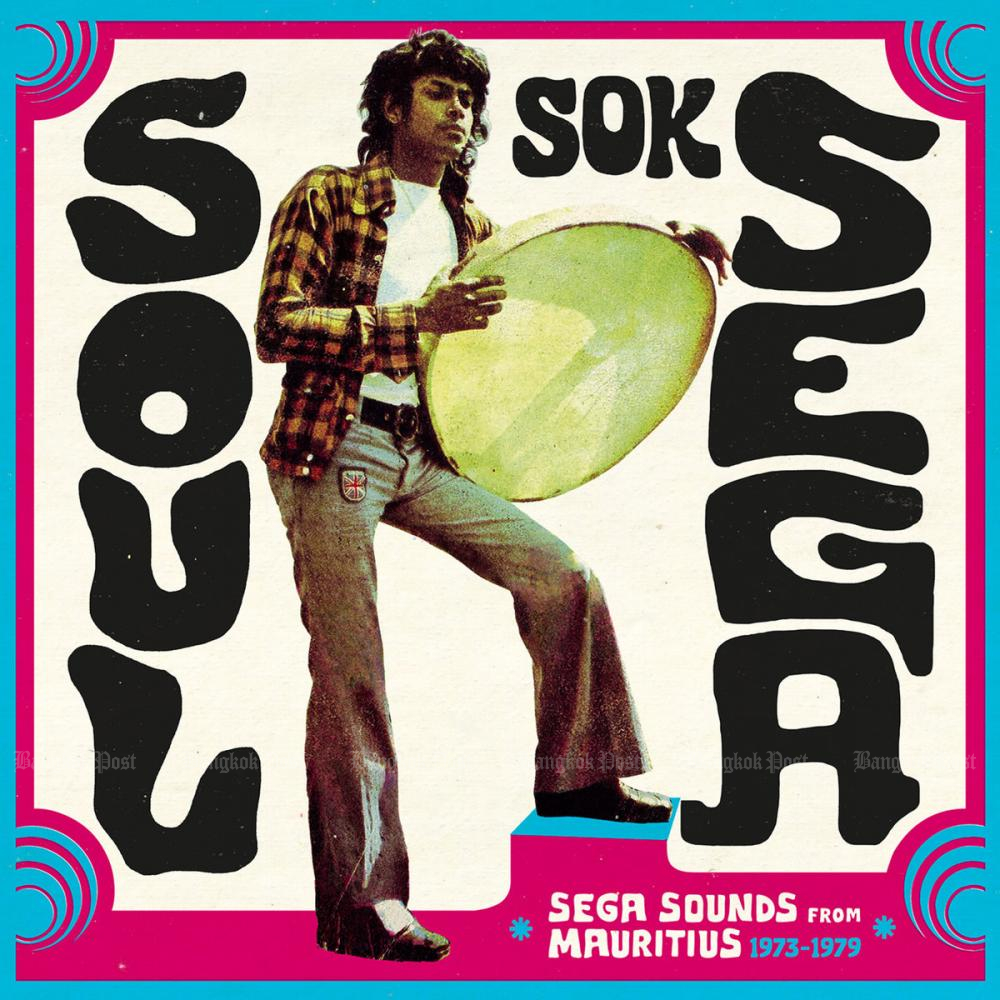Sega is the traditional and popular music of the island of Mauritius, which sits in the vast Indian Ocean; some call sega the blues of the Indian Ocean but I think of it as the soundtrack to the sea.
Mauritius is a smallish island, off the coast of Madagascar and like the latter, it has a hybrid culture that reflects the international nature of the islands.
I wrote at length on sega music in 2017 when I reviewed the Bongo Joes/FolkWelt compilation, Soul Sega Sa! Indian Ocean Segas From The 1970s (Bongo Joes/FolkWelt, Switzerland, 2016), a terrific collection of sega and maloya (a sega-related style from Reunion Island), and this week World Beat returns to Mauritius to review Soul Sok Sega: Sega Sounds From Mauritius, 1973-1979 (Strut Records), a compilation that was released a few months before the Bongo Joes/FolkWelt compilation but I have only just heard over this past week.
It's worth summarising the origins of the music, which is found not just on Mauritius but also Reunion, the Maldives, Seychelles and Chagos. The unique cultural roots of these islands developed mainly as the result of slavery when Africans from East Africa and the Horn of Africa were forcibly taken to the islands as slaves, and indentured labour (South Asians were sent to the islands to work on sugar plantations). Add to this diverse population, descendants from Southeast Asia (the lingua franca of Madagascar is a language that comes from Indonesia), Chinese and Arabic traders, and European colonialists, and you have a Creole population. Sega is sung in Creole, the lingua franca of the islands, and it was originally called chega after a dance style from Mozambique; it is powered by a goatskin frame drum (the ravanne), which is struck with both hands and is often accompanied by a metal triangle, metal cymbals and various kinds of shakers. The bubbling, loping rhythms of the music come from a conflation of two time signatures: 6/8 time which came from European dances and 12/8 time from local rhythms. This gives the music a unique beat that sounds at times a bit like calypso or Garifuna music from Central America, then sometimes snatches that could have come from the French Antilles or Brazil.
Traditionally, ravanne music, as it was played by slaves, was performed after work on the beach to roaring fires (the ravanne goes out of tune easily, so it had to be heated to maintain its pitch). Dances involved close foot work (some slaves wore chains and the dance reflects this). It was a marginalised music (way too much sex and alcohol involved for the Catholic church), shunned by the local middle class and Europeans, but through the work of the first master of the genre, Ti Frere, who played a somewhat sanitised version for soirees and hotel shows it developed quickly.
From the 1950s onwards, as Western music started to appear in Mauritius, new instruments like banjo and accordion were adopted. By the 1960s, guitars, Western drum kits and brass were part of every band's line-up and genres like rock'n'roll, jazz, soul, rock and funk arrived and were duly assimilated into sega music, as was Bollywood and Indian music ("sega chutney").
Various kinds of African music have been added over years, and seggae, a fusion of Jamaican reggae (often via mainland Africa) and sega is hugely popular across the islands. Each of the islands has its own distinctive style of sega.
The 70s was the golden era for popular sega styles and some of the hits from that time are on show in the stellar line-up of tracks on this excellent compilation by DJs and producers, Percy Yip Tong and La Basse Tropicale. The liner notes are detailed and Percy Yip Tong has tracked down those stars still living to get their comments. With their insiders' knowledge, the compilers have written an exhaustive and informative set of notes.
There are so many great tracks here, from the opener and title track to the Bollywood influenced Bhai Aboo, organ-based ballad (a nod to French chanson) Sega Lenoir by Les Stardust to the accordion-driven Sega Souval by Jean Claude. I particularly liked the pounding percussion of Yoyo's Coco Mamzelle and the mesmerising guitar lines of Jean Claude's Mademoiselle. The whole package is wrapped up in 70s instrumentation -- electric guitars (sometimes with lots of wah-wah distortion), electric organs and early synthesiser and funk basslines.
This compilation is a great introduction to sega, the sound of the Indian Ocean, and is highly recommended. I got my copy from Don Gilliland at Dasa Book Cafe, which has reopened with the usual social distancing. The store has a huge collection of CDs on all musical genres for sale (dasabookcafe.com). If you prefer vinyl then the good news is that the Zudrangma Record Store on Sukhumvit 51 has reopened, again with restrictions, Fridays to Sundays. More info from zudrangmarecords.com.
John Clewley can be contacted at clewley.john@gmail.com.

